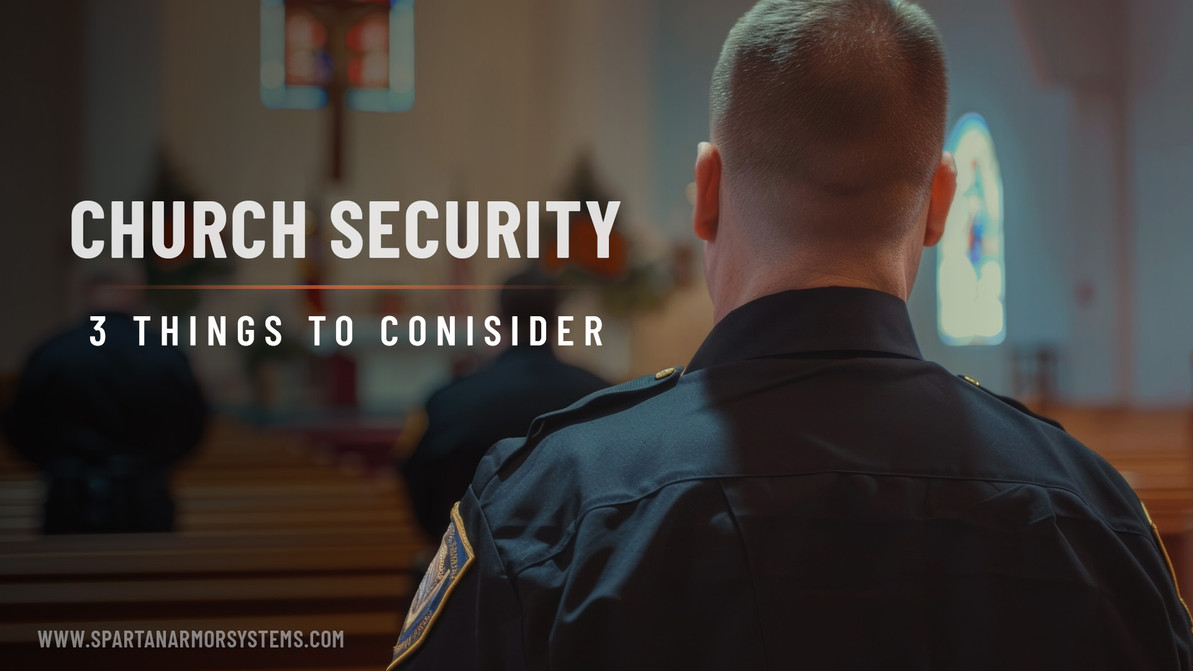Church Security - 3 Things to Consider
Church safety and security are not “optional” anymore — they are a stewardship responsibility. In recent years attacks on houses of worship and active-shooter incidents at public gathering places have been prominent in national data and in federal guidance, and that means churches should take a common-sense, faith-forward approach to preparedness. Use this short guide to update your Emergency Action Plan (EAP), train your people, and evaluate practical gear and medical readiness.
How Frequently Do Church Shootings Occur? - Lifeway Research
1) Emergency Action Plan (EAP)
Why update your EAP now
While active-shooter incidents fluctuate year to year, federal authorities and infrastructure agencies treat attacks on places of worship as a real risk and recommend planning and preparedness. Follow their guidance when you write your plan.
Read the FBI’s “Active Shooter Attack Prevention and Preparedness (ASAPP)” guide
What your EAP should cover (beyond “active shooters”)
- Fire, severe weather, structural failure, medical emergencies, suspicious packages, and a lost/left child.
- All occupant movements: normal services, children’s ministry, evening groups, funerals/weddings (these events have different crowd dynamics).
- Accessibility: what to do if elevators fail, how to evacuate mobility-impaired congregants, who assists them.
- Communication: primary/backup ways to notify staff and the congregation, who calls 911 and who holds the doors.
Templates & national guidance to use
Start with FEMA and CISA resources and adapt them to your building and congregation — they provide templates and practical checklists for houses of worship.
Make it local & practiced
- Map routes and alternatives for every room (include childcare rooms, basements, fellowship halls).
- Post simplified escape routes and place a one-page “what to do” for volunteers and new members.
- Run table-top exercises with leadership, then do at least one live drill per year (or more often for high-attendance ministries).
Quick member-facing steps
- Post exit maps in high-traffic areas.
- Create a short “member version” of the EAP (what to do if you hear an alarm, see suspicious activity, etc.).
- Encourage members to save local emergency contacts in their phones and know congregation reporting paths.
2) Personnel — roles, training, and relationships
Roles: clarity prevents confusion
Assign clear roles (exits, first aid, greeters, crowd flow, communications, and liaison to 911). Make sure every role has at least one trained backup and that volunteers understand boundaries (what they will and will not do). Clear accountability reduces mistakes during a crisis.
Training: practical, frequent, and appropriate
- Train on options-based responses (evacuation, shelter/barricade, or, as last resort, disrupt) and choose the approach that fits your congregation and laws.
- Include basic medical response training and equip several team members with bleeding-control kits.
- For advanced hands-on or armed-response training, consult legal counsel and local law enforcement before proceeding.
Working with law enforcement
- Build a relationship with your local police department: invite them to tour your property, review your EAP, and participate in at least one drill every year. Law enforcement can advise about local risks and response protocols and often will help with free training or assessments.
Armed volunteers / security teams
- If your church is considering armed volunteers, consult attorneys and your insurance carrier; check state/local laws and formal policies (use of force, storage, background checks). Many churches choose uniformed off-duty officers or professional security rather than arming volunteers because of liability and training burdens.
3) Gear
Decide with your security team which items meet your needs — radios or a phone plan for instant communication, clearly located medical kits, camera coverage for entrances, and whatever else fits your building and budget.
Work with your security team to choose practical, proportionate equipment that supports your plan. Start with reliable communications (two-way radios or a dedicated phone tree), clearly marked medical/bleeding-control kits and an AED, and basic monitoring for main entrances. Ask: who carries the radio, where the med kit is stored, and how volunteers access cameras or alarms — small details save time in a crisis.
We highly recommend looking into concealable body armor.
Spartan Armor Systems® provides many options for concealable body armor. Our top picks would be either our Flex Fused Core® Level IIIA | Spartan DL Concealment Package or Flex Fused Core® Level IIIA | Executive Protection Package
We recommend stocking enough for your security team to wear on Sundays, or during any other events at your church. Keep them hung up with the choir robes, and you can rotate them when your team members rotate.
If you are looking for something that has more stopping power with higher protection levels, it won’t necessarily be as concealable, but check out those options here: Level III Body Armor Packages | Level III+ Body Armor Packages | Level IV Body Armor Packages
Get in Touch:
- Phone: Give us a Call/Text at (520) 396-3335
- Email: info@spartanarmorsystems.com
Recent Posts
-
Does Body Armor Expire?
If the milk in your fridge was 2 months overdue, would you still drink it? What if it was chunk …Oct 24th 2025 -
The Advantages of Equipping Trauma Pads
Purpose Spartan Armor Systems® non-ballistic trauma pads are inserts worn behind body armor plates. …Oct 23rd 2025 -
Level IV Comparison
Level IV Ceramic Body Armor Chart Comparison: Hercules Xtreme & Hercules Hercules Xtrem …Oct 15th 2025




